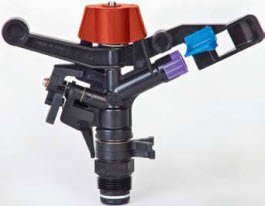How to prevent diseases for dairy cows
Biosecurity on the dairy
The spread of disease on a dairy operation can decrease milk production and reproductive efficiency, which costs dairy producers money. It can be challenging to limit movement of disease-causing organisms that can be transmitted through contaminated feed, equipment, infected animals, non-livestock, mortalities, and other routes. The least expensive and most successful way to control the spread of disease is to develop a biosecurity plan.
A biosecurity plan is a customized management plan designed to minimize the herd’s exposure to diseases. A biosecurity plan can be difficult to develop and demanding to maintain; however, it is necessary for a sound disease prevention program.
Suggestions for Developing a Biosecurity Plan
To develop a biosecurity plan that meets the needs of an individual operation, consult with individuals who are interested in the success of the operation, including veterinarians, nutritionists, Extension specialists, and others who have knowledge of disease transmission. A risk assessment analysis, performed by a veterinarian, can determine which areas or practices are low, medium, or high risks. Appropriate management plans can then be used to address the risks. The following is a list of suggested management practices to improve biosecurity.
Isolation
In an ideal world, a herd of cattle would be separated from contact with other cows. Accomplishing this may be nearly impossible in most situations. Fences that directly border with other cattle, and the occasional “escapee” either from your herd or a neighbor’s herd can compromise herd health.
Probably the biggest risk is introducing newly purchased cows and heifers directly into an established herd. Every animal arriving in the herd for the first time should be held in a quarantine area. The length of the quarantine depends on the potential for disease and the veterinarian’s recommendation. An effective quarantine is true isolation (ie., more than just one fence). Additionally, the movement of cows from livestock shows, veterinary facilities, and other off-farm areas back to the farm also exposes the herd to disease and possible infection.
• In-Herd Transmission
Even in a closed, isolated herd of cattle, there is potential for the spread of disease. For example, baby calves are susceptible to disease because their immune systems are weak. Similarly, cows within a herd can infect each other. But taking some simple steps can reduce the risk of disease.
• Artificial Insemination
A natural service bull can infect many cows with numerous diseases. The use of A.I. will reduce the risk of sexually transmitted diseases.
• Single-Service Breeding Gloves
When breeding or palpating, use a new glove for contact with each animal. Common-use gloves have been suspected in the spread of bovine leukemia.
• Single-Use Needles
Using common needles in a herd has led to outbreaks of anaplasmosis. We would not allow a doctor to reuse a needle for injecting us.
• Clean Equipment
Disinfect obstetric chains after each use. Avoid using ropes because they are hard to disinfect. Bolus applicators, intravenous kits, and other equipment reused for numerous cattle can also transfer disease if not properly cleaned and disinfected.
• Proper Mastitis Treatment Procedures
Only use commercially packaged, individual infusion tubes to treat mastitis. Several untreatable organisms such as mycoplasma and yeast can spread by using bottle mixes of antibiotics.
Vaccinations
Vaccines are like health insurance. Most people buy health insurance before they get sick; afterwards, it may be too late to receive coverage. Vaccines are the same way; they are not designed for cows that are already infected. Vaccinate cattle as a preventative, not a cure.
Check with your veterinarian to determine what vaccines are needed. Veterinarians have the experience to help plan and implement vaccination programs. There are some vaccines that are essential to any dairy operation. These are Leptospirosis, IBR, BIV,P13, BSRV, and Clostridium (Blackleg).
Other vaccines, such as the E. coli vaccine, can be very beneficial in certain situations. Customize vaccination programs to meet the needs of your specific herd, and always remain flexible to make changes as needed.
Traffic Control
Traffic control includes traffic that comes onto the operation as well as traffic within the operation. Are visitors allowed to drive their vehicles to areas where cattle, feed, or equipment are exposed? If possible, give visitors a designated area where they can park. Is the same equipment used for handling feed, manure, and dead cattle? The safest option would be to use separate equipment. If this is not possible, clean and disinfect equipment between different uses. The ultimate goal is to prevent any manure contamination from entering the oral cavity of cattle.
Traffic control is not only vehicles but also for other animals and people. Animals such as dogs, cats, horses, wildlife, rodents, and birds can spread disease. The most common potential source for a biosecurity break is the people who visit the farm after being in contact with animals on other farms. These can be the very people who assist with the health and management of the herd, including veterinarians, nutritionists, consultants, and any other people who come in direct contact with the cattle or walk through areas where cows are kept. It may seem trivial to ask these people to disinfect their boots before entering the herd, but it can help keep cows healthy and profitable.
Analyze your farm to see if there are areas where biosecurity can improve. If you do not have a biosecurity plan to decrease your herd’s exposure to disease, begin now. Just one disease that spreads through the herd can cost thousands of dollars.
by Angelica M. Chapa and Wesley S. Farmer - Mississippi State University Extension Service





















